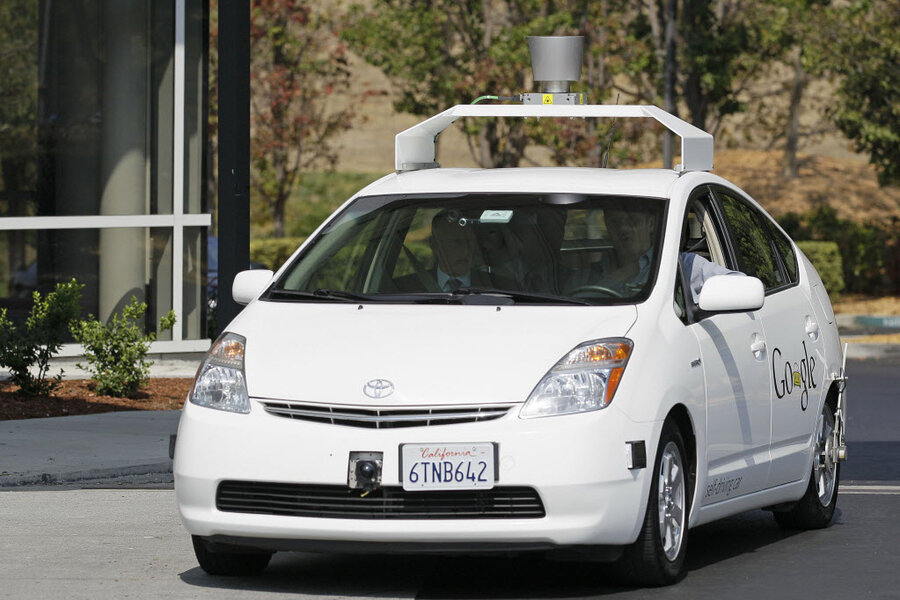Electric 'robocabs': Key to curbing vehicle emissions?
Loading...
What if, by 2030, every taxi in the US was automated, electric and self-driving?
The answer, according to a new study in the journal "Nature Climate Change" from researchers at Lawrence Berkeley National Laboratory, is that greenhouse gas emissions could be significantly dented, and they could be significantly dented for cheap.
Not only would this theoretical green fleet of self-driving taxis help the environment – per-mile greenhouse gas emissions from cars could drop by as much as 90 percent by 2030, according to the study – but the service would be cost-effective as well.
“You don’t often find that, where the cheapest is also the greenest,” said Jeff Greenblatt, co-author of the study, in an interview with Popular Science.
Even if an driverless electric car cost $150,000 up front, the researchers say that a car that could drive round the clock, not require a salary, and not use any gasoline would pay for itself within five years.
The paper does make a number of assumptions, including: predicted vehicle efficiencies in 2030, that vehicles would be electric and re-designed to be more compact and efficient, and that every vehicle would be scheduled correctly to minimize emissions. Efficiencies can depend on how many people are in the car, the route taken, and so on.
“By considering what happens when you’re sharing, these vehicles enable much bigger energy savings,” said Dr. Greenblatt in an interview with the MIT Technology Review.
But with driverless cars becoming increasingly popular and inching towards commercialization, researchers believe the taxi industry could be one of the first niche sectors to become fully automated.
Writing for the MIT Technology Review, Will Knight says that there would be advantages for coordinated fleets of vehicles, “especially for often-traveled routes. This could significantly change the transportation industry and potentially upend an entire sector of employment.”
Whether the automated taxi revolution plays out exactly as described in this study remains unclear. Other studies have found that environmental benefits would be marginal at best. A 2014 study from the Intelligent Transportation Society of America found that increased use of automation in vehicles could result in a reduction of 20 metric tons of carbon dioxide emissions over a ten-year period, which isn’t much in the context of emissions from the transportation sector – the second largest emissions source in the US at over 1,800 metric tons of CO2 in 2012.
Austin Brown, a scientist at the National Renewable Energy Laboratory in Washington, D.C., writes in an accompanying article in Nature Climate Change that “there are reasons to be cautious.”
“The future of transportation energy depends on how the system is used by people,” he adds. “Small, efficient vehicles will have to compete for customers with larger, comfort- or productivity-focused vehicles.”








